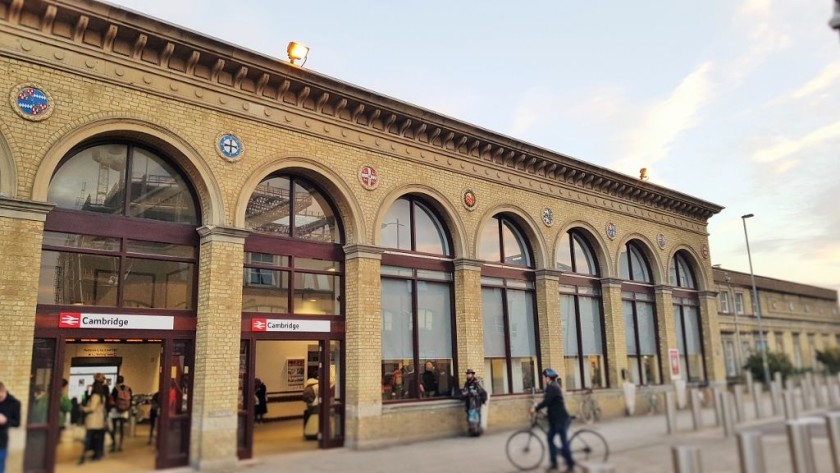Related Content
Content
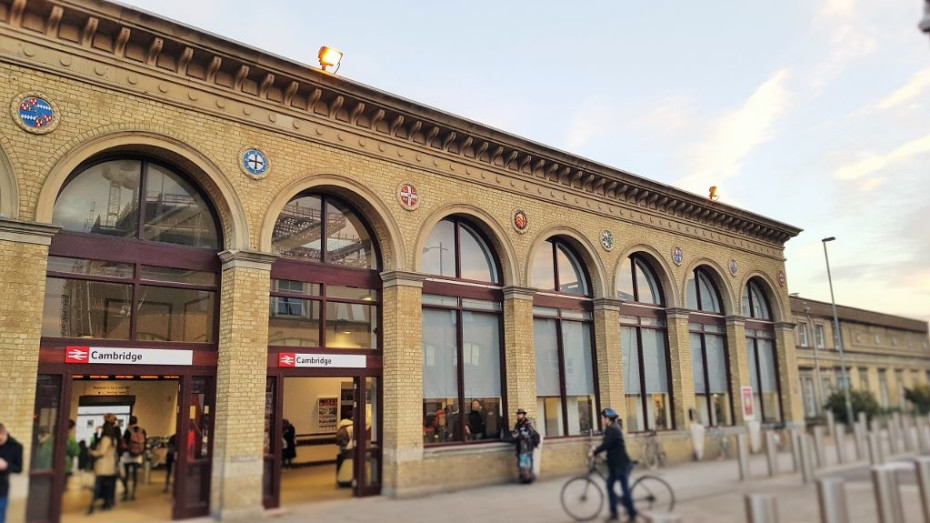
Cambridge (Cambridge)
Despite being located some distance from the city centre, Cambridge station has had to be enlarged in recent years to cope with the volume of travellers which now use it.
New platforms (tracks) 7 and 8 have been added and they are connected to the exit/entrance by a footbridge, which can be accessed by stairs and lifts (elevators).
Platforms (tracks) 1 – 6 are all directly connected to the main station building, which houses the entrance/exit.
Share
At a Glance
Services
Travel Information Desk
Accessibility
Step Free
Onward Travel
Car Hire
Taxi Rank
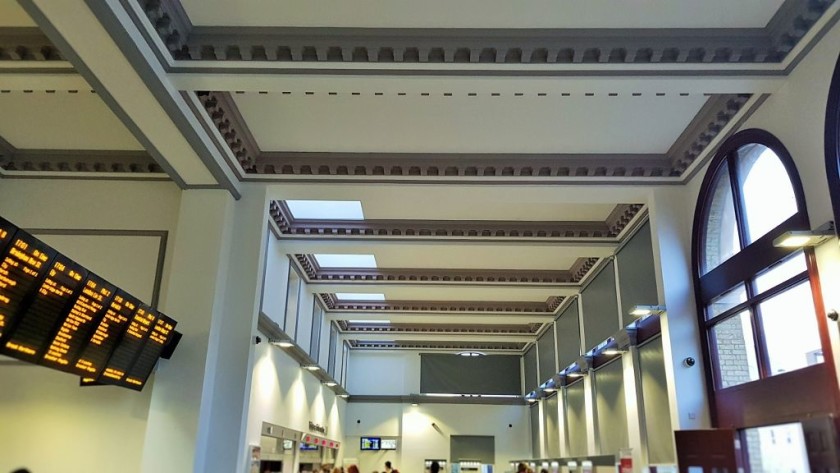
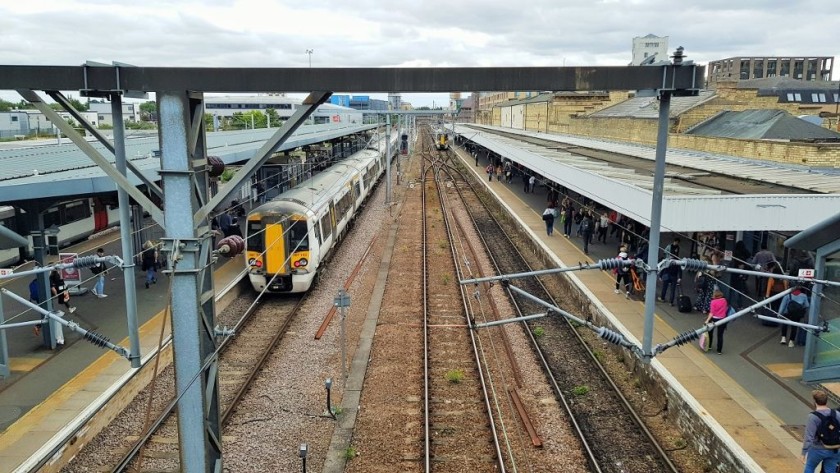
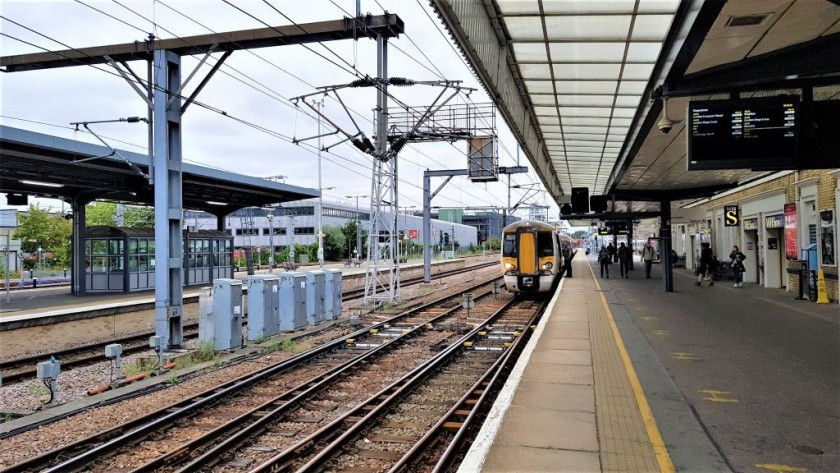
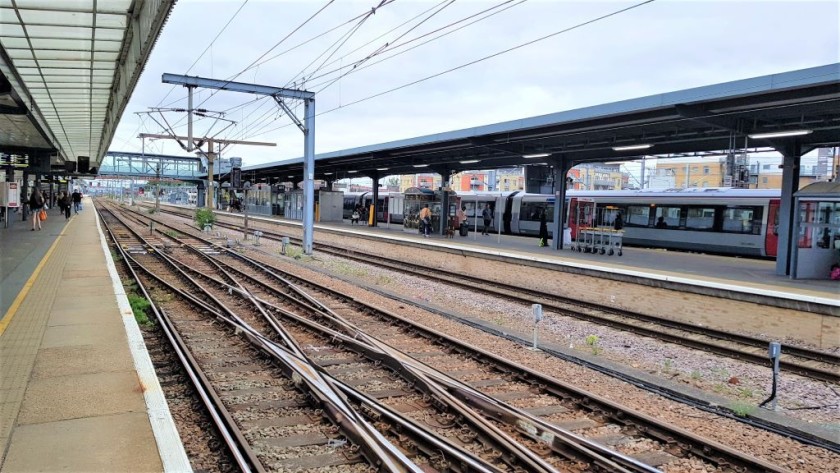
Arriving by train:
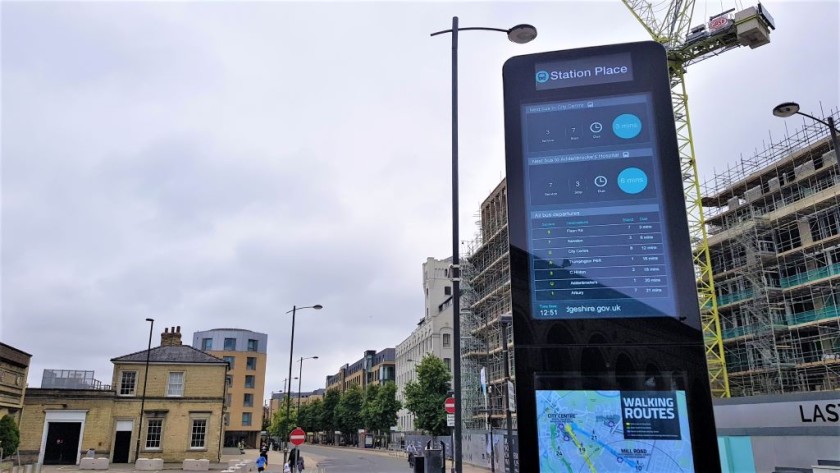
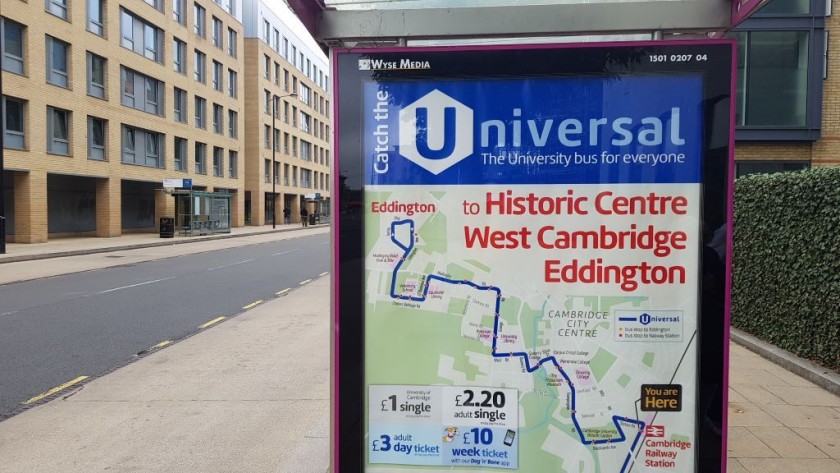
There is only one exit from Cambridge station and if your train arrives at platforms 1 – 6, to access it, all you need to do is walk ahead, beyond the front of the train.
If your train arrives at platforms 7 or 8, you will need to use the footbridge, if you want to use the lift (elevator) you will find it under the staircase.
Walking to the city centre, the area around St Andrews Church, from Cambridge station will take 15 – 25 mins; it’s almost a kilometre away.
So taking a bus can be a good option; as you exit from the front of the station, the bus stops are over to the left.
Bus line/route U leaves from stop 8 every 15 mins on Mon-Friday, every 20 mins on Saturdays and every 30 mins on Sundays.
It is the only route from the station which goes to the tourist heart of the city, the colleges on both banks of the River Cam; it stops by Queens' College close by one of the boarding points for the river tours by punt; and this is also the nearest bus stop in the city to King’s College Chapel.
Though a single ride ticket costs a comparatively pricey £2.20, but a ‘Day Rover’, which is in effect a return ticket costs £3.
Bus lines/routes 1, 3 and 7 all connect the station to the other side of the city centre; they all go to a stop by Christ’s College and a single ride tickets for those buses is £1.
Departing by train:
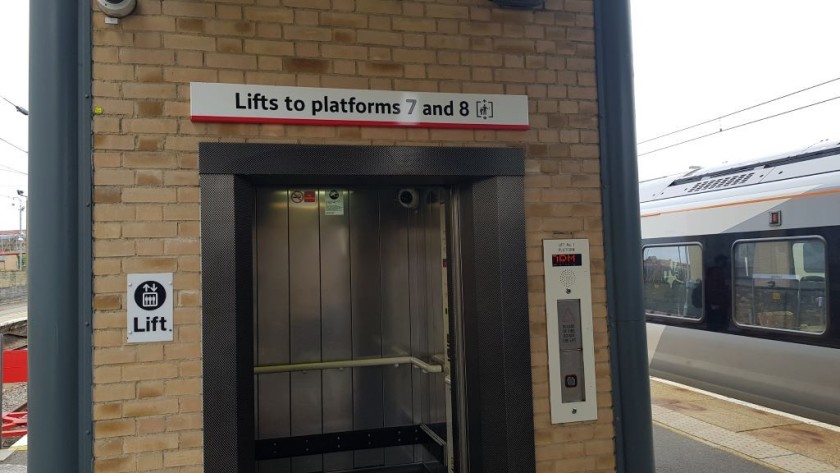
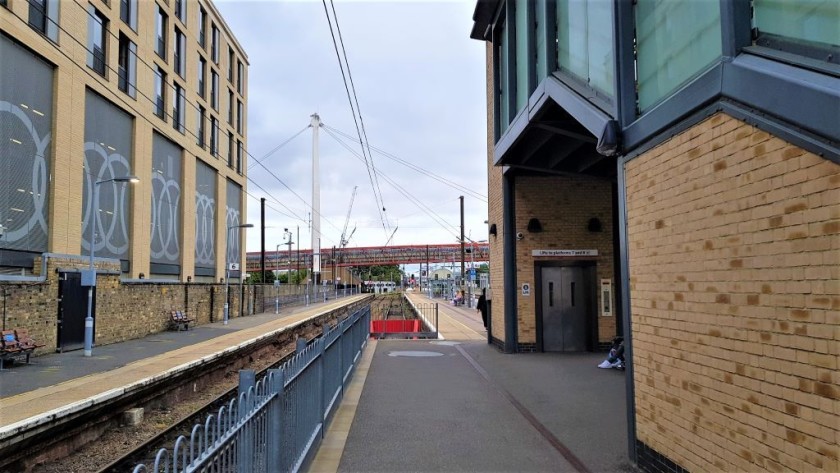
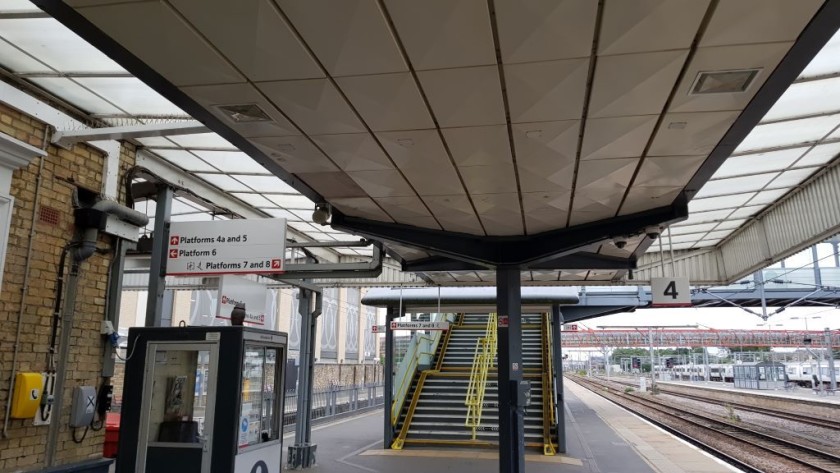
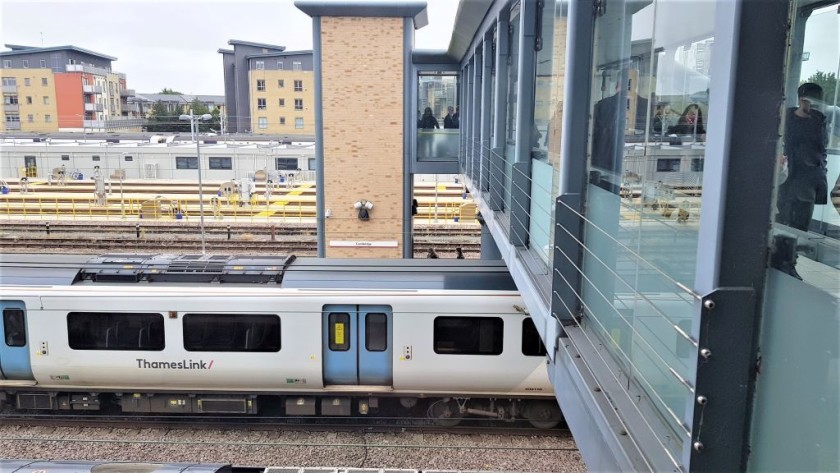
An unusual feature of Cambridge is the very long platform which you will step on to when passing through the ticket gates, and exiting the main station building.
This platform is divided into four sections, with 1a and 1 being to the right; 1a is at the far nothern end of this long p, while 4 and 4a are to the left; with 4a at the far southern end.
When passing through the ticket gates and stepping on to platform 1, turn to the right for platforms 2 and 3 and left for platforms 5 –8.
You will need to head over the footbridge to access platforms 7 and 8.
If you need to use the lift (elevator) to access the footbridge, you’ll find it under the staircase; there is also a lift to take you down to the trains on the other side of the bridge, so all of the platforms (tracks) at Cambridge have step-free access.
It’s a good idea to be at the station, ready to board, with your ticket in hand, a minimum of five minutes before your train will be departing.
Racing against the clock over the footbridge, or dashing along to platforms 1a or 4a are scenarios best avoided.
There is no set pattern for which train service will depart from each platform, so you’ll need to double check the departure screens, but most typically the departures are arranged as follows:
- Platform 1 - the Great Northern non-stop trains to London King’s Cross, the Greater Anglia trains to London Liverpool Street and the Cross Country trains to Stansted Airport.
- Platforms 2 and 3 - the stopping Thameslink trains to King's Cross
- Platform 4 – the Great Northern trains to Ely and King’s Lynn and the Cross Country trains to Birmingham
- Platforms 5 and 6 – the Greater Anglia trains to Ipswich and Norwich
Platform 7 – the Greater Northern non-stop trains trains to London Kings’ Cross, the Greater Anglia trains to London Liverpool Street and the Cross Country trains to Stansted Airport.
(note this is the same pattern of trains which use platform 1) - Platform 8 – the Thameslink trains to Brighton,
Train service summary:
Great Northern
(1) London King’s Cross by non-stop train - 2 x per hour
(2) Kings Lynn via Ely - 1 or 2 trains per hour
Greater Anglia
(1) London Liverpool Street via Audley End, Bishops Stortford and Harlow – 2 x per hour
(2) Ipswich via Newmarket, Bury St Edmunds and Stowmarket (hourly)
(3) Norwich via Ely, Thetford and Wymondham (hourly)
Thameslink
(1) Brighton via St Pancras International, Farringdon, City Thameslink, Blackfriars, London Bridge, East Croydon and Gatwick Airport (not beyond Gatwick Airport on Sundays)
2 x trains per hour on Mon-Fri and 1 x train per hour at weekends
(2) London King’s Cross via Royston, Letchworth and Hatfield
Cross Country
(1) Birmingham via Ely, March, Peterborough, Leicester and Nuneaton (hourly)
(2) Stansted Airport (hourly)
Cambridge North station:
Cambridge North station has been recently opened and it lives up to its name with a location to the north of the city centre.
It is connected to the picturesque town of St Ives by route B on the Cambridge busway, the buses depart hourly on Monday – Saturday and connect with the fast trains from King’s Cross, which depart from London at 12 minutes passed each hour.
Please support ShowMeTheJourney
This second version of ShowMeTheJourney is exciting and new, so we are genuinely thrilled that you are here and reading this, but we also need your help.
We’re striving not to let anything get in the way of providing the most useful service possible, hence a facility has been set up with DonorBox which can be used to support the running costs and make improvements.
Instead of advertising or paywalls, your financial support will make a positive difference to delivering an enhanced service, as there’s a lot of ideas which we want to make happen.
So if you have found the info provided here to be useful, please go here to say thank you.
Journeys
# Jump to a directionDirections
Journeys to Cambridge
Jump to directionsLondon to Cambridge by train
This second version of ShowMeTheJourney is exciting and new, so we are genuinely thrilled that you are here and reading this, but we also need your help.
We’re striving not to let anything get in the way of providing the most useful service possible, hence a facility has been set up with DonorBox which can be used to support the running costs and make improvements.
Instead of advertising or paywalls, your financial support will make a positive difference to delivering an enhanced service, as there’s a lot of ideas which we want to make happen.
So if you have found the info provided here to be useful, please consider saying thank you.

This is one of more than 100 train travel guides available on ShowMeTheJourney, which will make it easier to take the train journeys you want or need to make. As always, all images were captured on trips taken by ShowMeTheJourney.

